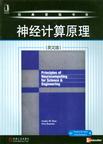神经计算原理
出版时间:2003-7 出版社:机械工业出版社 作者:Fredric M.Ham,Ivica Kostanic 页数:642
Tag标签:无
内容概要
本书是一部优秀的教材,着重讲述人工神经网络基本原理以及如何运用各种神经计算技术来解决科学和工程领域中的现实问题:模式识别、最优化、事件分类、非线性系统的控制和识别以及统计分析等。算法——大多数训练算法都用上下框线框出,便于读者查找 MATLAB函数——一些训练算法有一个附带的MATLAB函数实现(在文中用黑体字显示)。代码部分相对简短,仅用几分钟就可以输入MATLAB MATLAB Toolbox——书中大量使用MATLAB的Neural Network Toolbox来举例说明某些神经计算概念 Web站点——登录本书的Web站点http://www.mhhe.com/engcs/electrical/ham可获取最新、最全面的信息示例——在大多数章节中都给出了详尽的示例,阐释重要的神经计算概念 习题集——每章最后都给出大量应用神经计算技术的习题。一些习题需要使用MATLAB和MATLAB的Neural Network Toolbox。在某些情况下,还提供了MATLAB函数代码附录——附录A全面介绍了神经计算的数学基础。
书籍目录
About the AuthorsPrefaceAcknowledgmentsList of Important Symbols and OperatorsList of Important AbbreviationsPARTI Fundamental Neurocomputing Concepts andSelected Neural Network Architectures andLearning Rules1 Introduction to Neurocomputing 1.1 What Is Neurocomputing? 1.2 Historical Notes 1.3 Neurocomputing and Neuroscience 1.4 Classification of Neural Networks 1.5 Guide to the Book References2 Fundamental Neurocomputing Concepts 2.1 Introduction 2.2 Basic Models of Artificial Neurons 2.3 Basic Activation Functions 2.4 Hopfield Model of the Artificial Neuron 2.5 Adaline and Madaline 2.6 Simple Perceptron 2.7 Feedforward Multilayer Perceptron 2.8 Overview of Basic Learning Rules for a Single Neuron 2.9 Data Preprocessing Problems References3 Mapping Networks 3.1 Introduction 3.2 Associative Memory Networks 3.3 Backpropagation Learning Algorithms 3.4 Accelerated Learning Backpropagation Algorithms 3.5 Counterpropagation 3.6 Radial Basis Function Neural Networks Problems References4 Self-Organizing Networks 4.1 Introduction 4.2 Kohonen Self-Organizing Map 4.3 Learning Vector Quantization 4.4 Adaptive Resonance Theory (ART) Neural Networks Problems References5 Recurrent Networks and Temporal Feedforward Networks 5.1 Introduction 5.2 Overview of Recurrent Neural Networks 5.3 Hopfield Associative Memory 5.4 Simulated Annealing 5.5 Boltzmann Machine 5.6 Overview of Temporal Feedforward Networks 5.7 Simple Recurrent Network 5.8 Time-Delay Neural Networks 5.9 Distributed Time-Lagged Feedforward Neural Networks Problems References PART II Applications of Neurocomputing6 Neural Networks for Optimization Problems 6.1 Introduction 6.2 Neural Networks for Linear Programming Problems 6.3 Neural Networks for Quadratic Programming Problems 6.4 Neural Networks for Nonlinear Continuous Constrained Optimization Problems Problems References Solving Matrix Algebra Problems with Neural Networks 7.1 Introduction 7.2 Inverse and Pseudoinverse of a Matrix 7.3 LU Decomposition 7.4 QR Factorization 7.5 Schur Decomposition 7.6 Spectral Factorization - Eigenvalue Decomposition (EVD) (Symmetric Eigenvalue Problem) 7.7 Neural Network Approach for the Symmetric Eigenvalue Problem 7.8 Singular Value Decomposition 7.9 A Neurocomputing Approach for Solving the Algebraic Lyapunov Equation 7.10 A Neurocomputing Approach for Solving the Algebraic Riccati Equation Problems References8 Solution of Linear Algebraic Equations Using Neural Networks 8.1 Introduction 8.2 Systems of Simultaneous Linear Algebraic Equations 8.3 Least-Squares Solution of Systems of Linear Equations 8.4 A Least-Squares Neurocomputing Approach for Solving Systems of Linear Equations 8.5 Conjugate Gradient Learning Rule for Solving Systems of Linear Equations 8.6 A Generalized Robust Approach for Solving Systems of Linear Equations Corrupted with Noise 8.7 Regularization Methods for Ill-Posed Problems with Ill-Determined Numerical Rank 8.8 Matrix Splittings for Iterative Discrete-Time Methods for Solving Linear Equations 8.9 Total Least-Squares problem 8.10 An L-Norm (Minimax) Neural Network for Solving Linear Equations 8.11 An L1-Norm (Least-Absolute-Deviations) Neural Network for Solving Linear Equations Problems References9 Statistical Methods Using Neural Networks 9.1 Introduction 9.2 Principal-Component Analysis 9.3 Learning Algorithms for Neural Network Adaptive Estimation of Principal Components 9.4 Principal-Component Regression 9.5 Partial Least-Squares Regression 9.6 A Neural Network Approach for Partial Least-Squares Regression 9.7 Robust PLSR: A Neural Network Approach Problems References10 Identification, Control, and Estimation Using Neural Networks 10.1 Introduction 10.2 Linear System Representation 10.3 Autoregressive Moving Average Models 10.4 Identification of Linear Systems with ARMA Models 10.5 Parametric System Identification of Linear Systems Using PLSNET 10.6 Nonlinear System Representation 10.7 Identification and Control of Nonlinear Dynamical Systems 10.8 Independent-Component Analysis: Blind Separation of Unknown Source Signals 10.9 Spectrum Estimation of Sinusoids in Additive Noise 10.10 Other Case StudiesProblemsReferencesApp A Mathematical Foundation for NeurocomputingA.1 IntroductionA.2 Linear AlgebraA.3 Principles of Multivariable AnalysisA.4 Lyapunov's Direct MethodA.5 Unconstrained Optimization MethodsA.6 Constrained Nonlinear ProgrammingA.7 Random Variables and Stochastic ProcessesA.8 Fuzzy Set TheoryA.9 Selected Trigonometric IdentitiesReferencesName IndexSubject Index
图书封面
图书标签Tags
无
评论、评分、阅读与下载
用户评论 (总计5条)
- 正在看,有收获。英文版就是累点哈哈
- 书讲得很通俗 适合入门
- 看了中文版的,但觉得上边有得东西没写清楚。所以拿本英文原版看看。
- 特别是英文版,很不好学
- 强烈建议初学神经网络的同学研究研究,讲得很详细,推导过程详细,附录有用到的数学知识可查。不过纸张有点差,而且送过来还脏了。
推荐图书
- 永不停顿和可伸缩的64位RISC计算机技术概论
- 英语阅读经典文库 高中版(全二册)
- Photoshop 6.0/7.0中文版标准培训教程
- 黄帝内经集注
- 少儿电子琴初学入门
- 现代血液病学
- 全国硕士研究生入学统一考试英语考试分析
- 0-6岁宝宝食谱
- 皮具管理王国
- 环境科普知识手册·少儿连环画读本
- Flash MX中文版标准培训教程
- 五笔字型与文字排版标准培训教程
- 药品价格热点问题解答
- 美体塑身
- 跟专家练轮滑
- 全品高考复习方案
- 全品高考复习方案
- 问题式、症候阅读与意识形态
- 03轻松练习30分测试卷 初三化学上册
- 奥林匹克初中数学举一反三:3年级
- 当代汉语新词词典
- 看图诊治食用菌病虫害
- 科学童话
- 房地产投资分析与决策
- “三个代表”重要思想宣讲录
